Hidden beneath the sands of Abydos lies one of Egypt’s most enigmatic structures—the Osireion. Unlike the ornate temples of the New Kingdom, this subterranean monument, built from colossal megalithic blocks, defies conventional explanations. With its mysterious water moat, lack of inscriptions, and architectural precision, scholars continue to debate whether it was truly constructed by Seti I or by a lost civilization far older than dynastic Egypt. Could the Osireion be a forgotten relic of an ancient world, holding the secrets of Osiris and the afterlife?
Architectural Features and Construction
One of the most striking aspects of the Osireion is its subterranean nature—it is built at a much lower level than the adjacent Temple of Seti I, leading some to speculate that it predates the pharaoh’s reign. Unlike the intricately decorated temples of the New Kingdom, the Osireion features colossal granite blocks, some weighing over 100 tons, sourced from Aswan 500 miles away. The logistical challenge of transporting these stones suggests that its builders possessed advanced engineering knowledge.

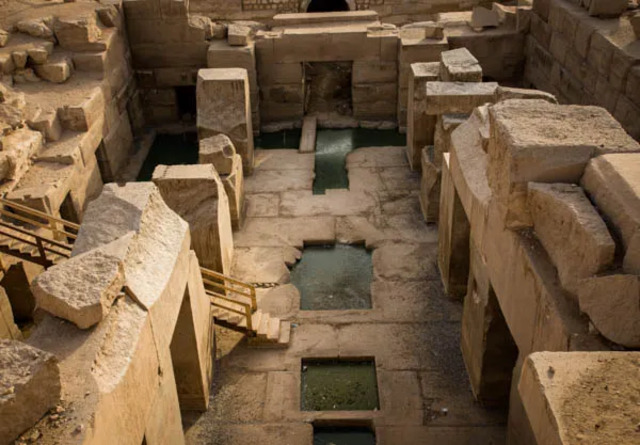
The structure consists of a central ‘island’ platform surrounded by a water moat, supported by massive granite pillars. The purpose of the water remains uncertain, but its symbolic connection to creation, purification, and rebirth in Egyptian mythology is undeniable. Unlike most Egyptian temples, which are covered in hieroglyphic inscriptions, the Osireion is almost entirely devoid of carvings or written records, making it even more mysterious.
Another intriguing feature is its alignment with true north, leading some researchers to propose an astronomical function. Could the Osireion have served as an observatory, a place of sacred rituals, or even a gateway between the living world and the afterlife?
Video
Discover the pre-Egyptian underground hydraulic technology at the Osireion – watch the video to explore this ancient and innovative engineering marvel!
Religious and Mythological Significance
The Osireion is closely associated with Osiris, the Egyptian god of the afterlife, fertility, and resurrection. In Egyptian cosmology, water played a vital role in creation myths, often symbolizing the primeval waters of Nun, from which the world emerged. The presence of water within the Osireion might represent Osiris’s connection to the afterlife and his domain over the Nile’s life-giving properties.
Additionally, some scholars propose that the Osireion was a cenotaph, a symbolic tomb rather than an actual burial site. Abydos itself was considered the spiritual burial place of Osiris, and pilgrims often traveled there to pay homage to the god. If the Osireion was indeed dedicated to Osiris, it may have been a sacred site for ritual purification, rebirth ceremonies, and initiation rites.
The lack of inscriptions has led to speculation that the Osireion was reserved for mystery cults or secret rituals, possibly linked to Osirian resurrection myths. Could this have been a hidden chamber for the spiritual transformation of initiates, a place where priests symbolically “died” and were reborn into higher knowledge?
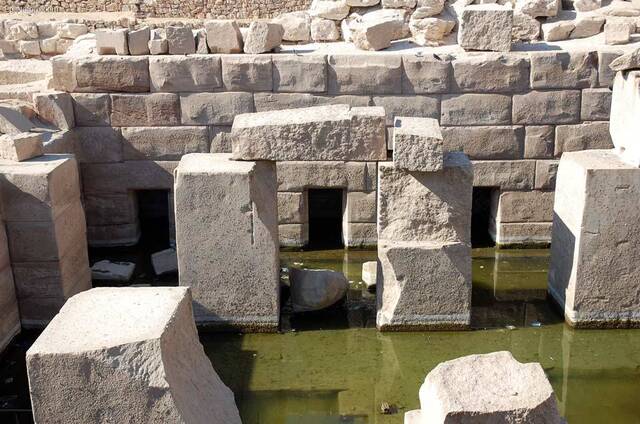
Theories on the Age and Origins of the Osireion
Mainstream Egyptologists date the Osireion to the reign of Seti I (1294–1279 BCE), arguing that it was built as part of the Temple of Seti I complex. However, this theory is based largely on proximity rather than concrete archaeological evidence.
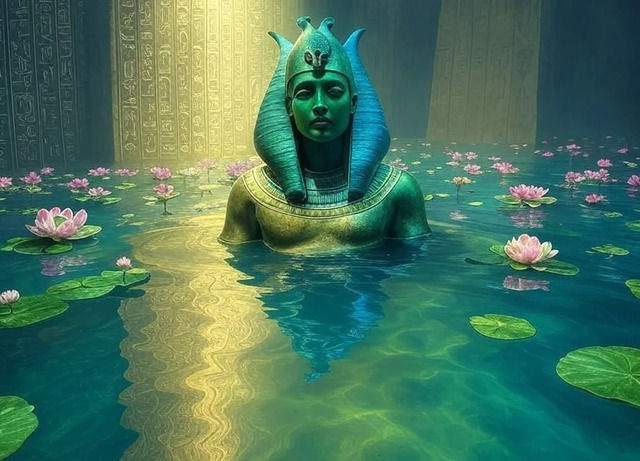
Some alternative researchers suggest that the Osireion could be far older than the New Kingdom, possibly from an earlier lost civilization. The key points supporting this theory include:
- Signs of water erosion on the Osireion’s massive stones, which some geologists argue could only have occurred between 12,000 and 10,000 BCE, during a period of heavy rainfall before the Sahara became a desert.
- Its architectural similarities to pre-dynastic megalithic structures found in other parts of the world, including Göbekli Tepe (Turkey) and Baalbek (Lebanon).
- The writings of Greek geographer Strabo (1st century BCE), who described the Osireion as an already ancient structure, leading some to believe that it significantly predates Seti I.
Could the Osireion be evidence of a lost chapter in human history? Was it built by a civilization that existed before recorded Egyptian history, only to be later rediscovered and repurposed by Seti I?
Possible Functions of the Osireion
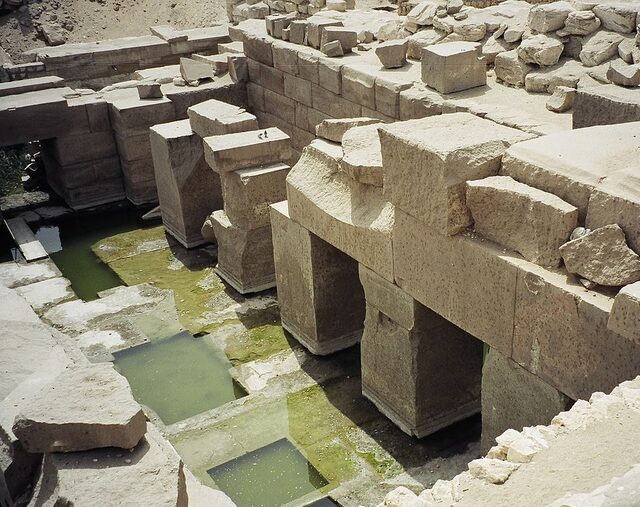
The mystery surrounding the Osireion’s true function has led to several intriguing hypotheses:
A Cenotaph for Osiris
- A symbolic burial site representing Osiris’s resting place.
- A center for funerary rituals and offerings to the god of the underworld.
A Ritual Purification Site
- The presence of water suggests ritual cleansing and rebirth ceremonies.
- Possibly linked to Nile flood rituals or fertility rites.
An Astronomical Observatory
- Its alignment with true north raises questions about its role in celestial observations.
- Might have been used for tracking planetary movements or solstices.
A Mystery School or Initiation Site
- Some believe it was used for secret initiations into Osirian mysteries.
- A place where priests underwent symbolic death and spiritual rebirth.
Each of these theories presents a compelling case, yet none have been definitively proven, keeping the Osireion shrouded in speculation.
The Osireion in Modern Archaeology
Despite its significance, the Osireion remains one of Egypt’s least understood monuments. Recent archaeological studies have employed ground-penetrating radar and advanced dating techniques to further investigate its origins. However, due to the presence of underground water, excavation efforts are challenging.
Ongoing conservation efforts aim to prevent further deterioration, as water damage and erosion threaten its structural integrity. Future research, including DNA testing of organic materials, geophysical mapping, and 3D reconstruction, could provide new insights into this ancient structure.
The Osireion continues to captivate both mainstream scholars and alternative researchers, each hoping to unravel the secrets hidden within its colossal stone walls.
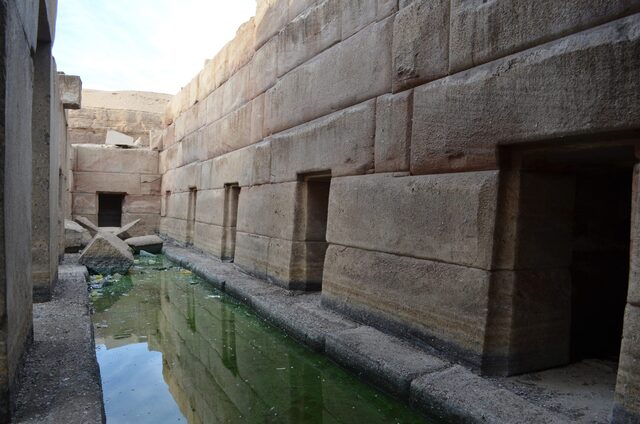
Video
Watch the video to uncover the ancient underground hydraulic technology at the Osireion that has puzzled archaeologists for centuries – explore the mysteries behind this remarkable find!
Conclusion
The Osireion remains one of the most enigmatic and controversial structures in ancient Egypt. Its massive megalithic construction, subterranean design, and association with Osiris fuel ongoing debates about its true purpose and age. While traditional scholars attribute it to Seti I’s reign, alternative theories suggest it may be a relic from a lost civilization, potentially dating back over 12,000 years.
Whether it was a cenotaph, ritual site, observatory, or initiation chamber, the Osireion’s mystical aura and architectural precision set it apart from other Egyptian temples. As new archaeological technologies emerge, perhaps one day we will finally unlock the secrets of this megalithic masterpiece.
Until then, the Osireion stands as a silent guardian of Egypt’s past, a structure that whispers of lost knowledge, ancient rituals, and the eternal cycle of life, death, and rebirth.



